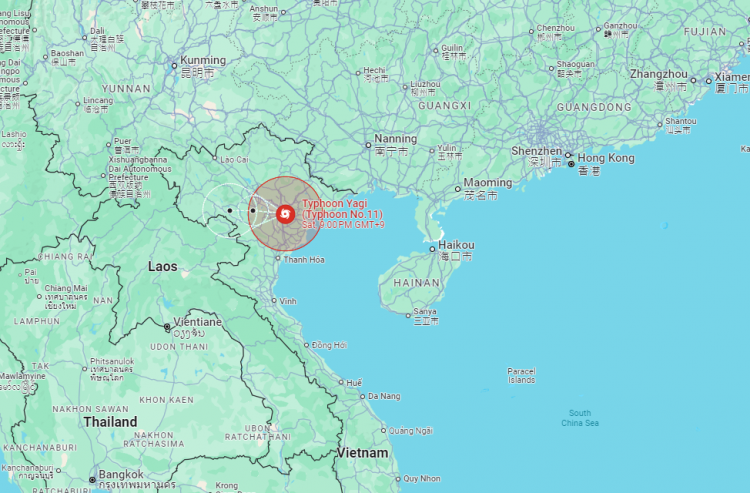Super Typhoon Yagi, the second most powerful storm of 2024, has unleashed devastating effects across Southeast Asia, leaving a trail of destruction in its wake as it moved from the Philippines to China and finally slammed into northern Vietnam. The storm, which has already claimed numerous lives and caused widespread damage, has become a stark reminder of the increasing ferocity of typhoons fueled by climate change.
Yagi made landfall in northern Vietnam on Saturday, bringing with it winds of up to 160 kilometers per hour (99 mph). The storm hit the island districts around 1 p.m. local time, just a day after tearing through China's Hainan province. In Vietnam, at least four people have been confirmed dead, with 78 others injured, according to government sources. The number of casualties is expected to rise as rescue operations continue, with at least a dozen people reported missing at sea.
In Haiphong, an industrial hub with a population of two million people, Yagi's powerful winds reached speeds of up to 90 kilometers per hour, causing widespread power outages and significant structural damage. The coastal city, home to factories belonging to foreign multinationals and local companies like VinFast, was among the hardest hit. The strong winds shattered windows, tore off metal roofing sheets, and toppled thousands of trees, leaving many residents in shock. "The wind is strong enough to blow a person over," said Nguyen Manh Quan, a 40-year-old Hanoi resident.
Before reaching Vietnam, Yagi had already wreaked havoc in China and the Philippines. In Hainan, a province with a population of over 10 million, the storm caused extensive damage, including the destruction of power lines that left more than 800,000 homes without electricity. The typhoon claimed at least two lives in Hainan and 16 in the Philippines, where it first made landfall earlier in the week.
The Vietnamese government had taken precautionary measures in anticipation of the storm, evacuating more than 50,000 people from coastal towns and deploying 450,000 military personnel to assist with disaster response. However, despite these efforts, the scale of the destruction has been overwhelming. Several airports, including Hanoi's Noi Bai, were closed for several hours, resulting in the cancellation of over 300 flights. Public transport in Hanoi was also suspended, with buses and metro lines ceasing operations as a precautionary measure.
The storm has not only caused immediate damage but has also disrupted daily life in the region. High schools in 12 northern provinces, including the capital, were closed, and the government has issued warnings of potential heavy flooding in central Hanoi. In the capital, efforts to prune trees to prevent them from falling were in vain as strong winds and rain still managed to knock over several trees and billboards.
As Yagi continues to move inland, the full extent of the damage is yet to be assessed. However, it is clear that the storm has left a significant impact on the lives of millions of people across Southeast Asia. The increasing intensity and frequency of such storms have raised concerns about the future, with scientists warning that warmer ocean temperatures due to climate change are likely to result in more powerful typhoons.
The destruction caused by Yagi has drawn attention to the need for greater preparedness and more robust infrastructure to withstand such natural disasters. As Vietnam and its neighbors begin the process of recovery, the region is once again reminded of the devastating power of nature and the urgent need to address the underlying factors contributing to the growing severity of storms.
Yagi, named after the Japanese word for goat and the constellation Capricornus, will be remembered not only for its destructive force but also as a symbol of the challenges that lie ahead in an increasingly volatile climate.






